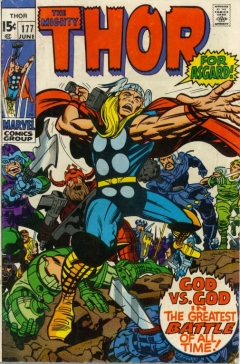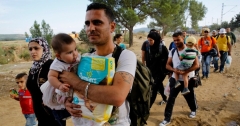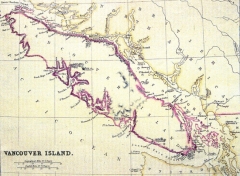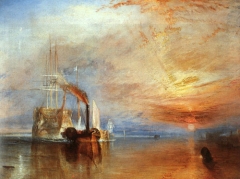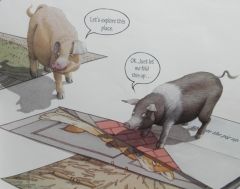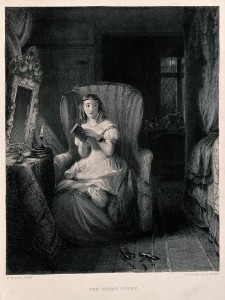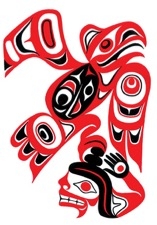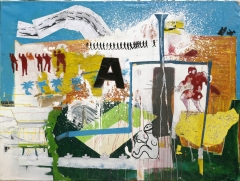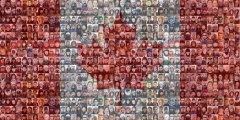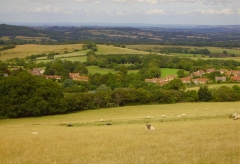Although normally the prerequisite for upper-level courses is two 200-level English courses, for students interested in specific courses, prerequisites may be waived through consultation with the Professor and Chair.
Fall 2016
| Course | Course Description | Degree Requirement | Professor |
|---|---|---|---|
| 300 | Backgrounds to English Literature | Literature and Traditions, Pre-1700 | Doughty |
| 310 | Rhetoric | Literature and Criticism | Lepage |
| 314 | Modern Critical Theory | Literature and Criticism | Lane |
| 325 | Environment Literature | Literature and Culture | Arnold |
| 327 | International Literature | Literature and Culture | Rout |
| 331 | Topics in West Coast Literature | Literature and Culture | Smith |
| 348 | Topics in 18th-Century Literature | Literature and Traditions, 1700-1900 | Burgoyne |
| 352 | Topics in 20th and 21st-Century Literature | Literature and Traditions | Armstrong |
| 394 | Topics in Television Narratives | Word and Image | Masson |
Spring 2017
| Course | Course Description | Degree Requirement | Professor |
|---|---|---|---|
| 328 | Gender and Sexuality in Literature | Literature and Culture | Stanley |
| 329 | Topics in Children’s and Young Adult Literature | Literature and Culture | Doughty |
| 330 | Topics in Speculative Narrative | Literature and Culture | Sully |
| 332 | Topics in Indigenous Literatures | Literature and Culture | Watkins |
| 333 | Topics in Post-colonial Literatures | Literature and Culture | Stephens |
| 334 | Topics in Canadian Literature | Literature and Culture | Torkko |
| 344 | Topics in Shakespeare | Literature and Traditions, Pre-1700 | Lane |
| 350 | Topics in 19th-Century Literature | Literature and Traditions, 1700-1900 | Hagan |
| 398 | Film Studies | Film Studies | Armstrong |
NOTE: Any course descriptions or reading lists here are tentative. Check back for updates.
Course Descriptions: Fall 2016
ENGL 300: BACKGROUNDS TO ENGLISH LITERATURE
Professor Terri Doughty
Blended Delivery; Available Entirely Online
What do Tolkien, Marvel Comics, Yu-Gi-Oh!, J. K. Rowling, and heavy metal music have in common? They have all found inspiration in Norse mythology, which continues to inform literary and popular culture today. In this course, we will read the main source material for Norse mythology, the prose and poetic eddas; locate the elements of Norse mythology in the early English literary tradition in a few samples of Anglo-Saxon poetry; study the connection between the rediscovery of Norse literature and culture in the eighteenth and nineteenth centuries and the forging of English national identity; and finally explore contemporary literature that reworks Norse mythology to address issues related to cultural transformation, fluidity of identity, free will, fate, and war.
Texts: Snorri Sturluson, The Prose Edda, transl. Jesse L. Byock (Penguin Classics); The Poetic Edda, transl. Carolyne Larrington (Oxford Classics); selections from Robert W. Rix, Norse Romanticism (online); small selection of poems (on VIULearn); Neil Gaiman, American Gods; A. S. Byatt, Ragnarok.
Evaluation: Short paper (20%); Discussion Questions Assignment (10%); Research Proposal (10%); Research Paper (25%); Take-home Exam (25%); Participation (10%).
ENGL 310: RHETORIC
Professor John Lepage
This course introduces students to the history and application of rhetorical criticism. The course will begin by defining the much misunderstood term “rhetoric” and setting it in an historical context. It will acquaint students with an ancient debate about rhetoric and philosophy that took place between Plato and the Sophists (in which Socrates famously disparaged rhetoric by comparing it with cookery) and Aristotle’s later legitimation of the field of study as a proper one. It will examine the evolution of rhetoric from the height of its importance in Roman antiquity to its degradation into a non-discipline (and term of disparagement) in the early modern period. Finally, it will examine its present status and explore the relationship between rhetorical criticism and literary criticism. The course will introduce students to a wide array of technical terms peculiar to the field – and to how they may be used. Finally, it will introduce general methods of rhetorical criticism, which students may apply in their courses and in the wider sphere of their lives.
Since classical rhetoric evolved from the practice of public oratory, a significant part of the course will involve the application of rhetorical effects in speech. Course assignments will include an oral presentation and short essay, mid-term assignment, research essay, and a final exam. Texts: James A. Herrick’s The History and Theory of Rhetoric: An Introduction (Toronto: Pearson, 2013) and Sonja K. Foss, Rhetorical Criticism: Exploration and Practice (Long Grove, IL: Waveland, 2009). Other materials will be supplied by the instructor.
ENGL 314: MODERN CRITICAL THEORY
Professor Richard Lane
Our semester will be spent with our taster menu of different ways of reading and exploring literature and other types of text. Our taster menu will contain something for everyone, so part of our process will involve finding what we like most of all among the many choices. Once we have personalized our theory menus, we can use our new ways of reading to explore literature in different and interesting ways. Our course book, Global Literary Theory: An Anthology, contains introductory sections and summaries of all the extracts we will work with, so whatever the level of each student taking the course, there will be accessible and introductory material to work with. So what is on the menu? Examples include digital humanities, postmodernism, psychoanalytical criticism, the materiality of the text, political reading, feminism, ecocriticism, and postcolonial studies among other theories.
ENGL 325: ENVIRONMENTAL LITERATURE
Professor Richard Arnold
ENGLISH 325 is a multi-genre course (Poetry, Fiction, Non-fiction, Film, Music,…?) which will examine the relationship of writers to their natural environment (a.k.a. “bioregionalism”). Imaginative literature forms the main focus, but related political, scientific, and cultural issues are also addressed. We will discern in writers the conviction that it is time to reassess our place in nature, rather than above or outside it. Over the duration of the course, we will be reminded of one cardinal truth: Humans are a part of, not apart from, nature.
Texts:
B.Swann, Poetry Comes Up Where it Can (multi-national poetry)
Pitt-Brooke, Chasing Clayoquot (Canadian ecological essays/wilderness narrative)
Kingsolver, Prodigal Summer (US novel)
Films (provisional):
The 11th Hour
Sharkwater
Darwin’s Nightmare
Assignments: Short Paper (500 words), Research Paper (2000 words), Midterm and Final Exams, Participation.
ENGL 327: INTERNATIONAL LITERATURE
Professor Katharina Rout
Sixty million people are forcibly displaced worldwide, fleeing war and persecution and, increasingly, the effects of climate change; ten million of them are stateless. This refugee crisis affects us all: it is “humanity’s crisis” (Zygmunt Bauman).
Since Homer, Ovid, and Dante, writers have told us stories of exile and migration, and Canadian literature has kept the memory of earlier refugee crises alive. Today writers from many countries—many refugees themselves—tell of perilous journeys out of Afghanistan or Syria, across the Sahara or the Mediterranean, of nation states, borders, and traffickers. Their stories are about life and death, and they reshape notions of identity not just for the people who no longer have a place to call “home,” but also for people who have never had to move but see their society changing around them as a result of large-scale migration.
Literature by and about refugees raises questions about the discipline of literary studies. For example, in his story “The Truck to Berlin,” award-winning Iraqi writer Hassan Blasim writes about a truck full of refugees rushing through a Serbian forest, pursued by border police. Blasim found refuge in Finland. Is he contributing to Iraqi or to Finnish literature? Or does his story render the idea of national literatures obsolete? Are the concepts of “transnational literature” or “world literature” more appropriate? What languages do refugees choose to write in, and how are we to read their stories in translation? How does the role of the author change when refugees tell their stories with the help of writers in their new countries and languages? And how do we, as literary critics, interpret and evaluate such writing?
In this section of ENGL 327, we will read fiction, memoir, graphic novels, and poetry by and about refugees mostly from Africa and Asia, and in particular from the Middle East. And because the war in Syria has contributed so dramatically to the refugee crisis, part of the course will be devoted to literature from Syria that will help us better understand the catastrophe unfolding there.
ENGL 331: TOPICS IN WEST COAST LITERATURE: WRITING VANCOUVER ISLAND
Professor Toni Smith
Despite living here, many of us don’t know enough about the rich and complex social forces that have shaped Vancouver Island’s diverse peoples. In this course, we’ll read texts from a wide range of authors and storytellers who explore the Island’s social, political, cultural, ecological, colonial and modern past and present.
Readings will include First Nations accounts of traditional and contemporary life, travel diaries and maps from early explorers, short stories, novels and memoirs from the 19th, 20th, and 21st centuries. We’ll learn more about the political and economic structures that still influence our lives here: the Douglas Treaties, the history of Chinese labour, resource industries like fishing, logging, and coal mining.
Reading fiction and non-fiction from key voices and eras will enable us to consider the ways that islands and ports operate as colonial and cosmopolitan spaces, where people from all over the world encounter each other in powerful ways.
Sample Reading List
- Coursepack of historical and other short readings
- Roderick Haig-Brown, On the Highest Hill
- Irene Baird, Waste Heritage
- Emily Carr, The Book of Small
- M.C. Wylie, The Curve of Time
- Jack Hodgins, The Invention of the World
- Marilyn Bowering, To All Appearances a Lady
- Lee Maracle, Celia’s Song
- Ann Eriksson, Falling from Grace
ENGL 348: TOPICS IN 18TH-CENTURY LITERATURE: ROMANTICISM AND REVOLUTION
Professor Daniel Burgoyne
If we identify imagination and creativity as key to the English Romantic period, we need also to recognize that the imagination was often conceived in political and social terms. Thus, we might say, that at the root of romantic notions of creativity lies the imperative and the means to social action.
In referring to the French Revolution as “the master theme of the epoch in which we live” (in an 1816 letter to Byron), Percy Shelley acknowledges that, of all the diverse factors of this period, “revolution” is arguably the most significant one. This course will consider a range of writers who engage with the revolutionary impulse, including the importance of the individual, social and political reform, women’s rights, slavery, war, freedom of speech, and the environment.
Readings will include writings by Anna Letitia Barbauld, William Blake, Mary Robinson, Mary Wollstonecraft, William Wordsworth, Dorothy Wordsworth, Samuel Taylor Coleridge, Thomas De Quincey, Percy Bysshe Shelley, John Clare, John Keats, and Mary Shelley.
This approach will reveal writing that is more political and socially progressive, radical and perhaps subversive, than Romanticism is sometimes understood. I want you to explore the Romantic imagination as a means to self-realization and social change. I encourage you to compare the issues, struggles, and recognitions of the Romantics with those that we face today.
Text
The Broadview Anthology of British Literature, Volume 4: The Age of Romanticism (second edition, Broadview, 2010)
ENGL 348 was formerly called ENGL 378; credit will not be granted for both courses.
ENGL 352: TOPICS IN 20TH AND 21ST-CENTURY LITERATURE: NORTH AMERICAN WILDERNESS NARRATIVES, 1903-2006
Professor Clay Armstrong
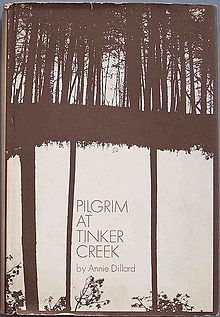
This course will explore a range of writing inspired by raw experiences in the natural world, or what Walt Whitman had earlier called “Nature without check with original energy.” We begin with traditional literary works from people like Jack London and Willa Cather before seeing the evolved wilderness narratives of mid-century, when the fiction is largely displaced by creative non-fiction and becomes more closely aligned with the science of conservation. From Farley Mowat and Eric Collier to Annie Dillard and Edward Abbey, students will read from award winning literatures that call to protect specific North American wildness areas. We’ll finish by examining more recent non-fiction works focused on the experiences of individuals trying to escape back into what Faulkner described as “an old dead time.” Please feel welcome to contact Dr Armstrong for more information about this course.
Tentative readings include:
- Jack London, Call of the Wild
- Willa Cather, O Pioneers!
- Mary Austin, Land of Little Rain
- William Faulkner, Big Woods
- John Muir, Spiritual Awakenings
- Farley Mowat, Never Cry Wolf
- Eric Collier, Three against the Wilderness
- Annie Dillard, Pilgrim at Tinker Creek
- Margaret Atwood, Surfacing
- Edward Abbey, Desert Solitaire
- Marilynne Robinson, Housekeeping
- John Krakauer, Into the Wild
- John Valliant, The Golden Spruce
ENGL 394: TOPICS IN TELEVISION NARRATIVES: JOSS WHEDON AND FIREFLY
Professor Cynthea Masson
 Over the past fifteen years, the works of Joss Whedon have been the subject of numerous academic books and articles. Indeed, Whedon is currently the only television creator / director / writer to have an entire peer-reviewed scholarly journal dedicated to his works: Slayage: The Journal of the Whedon Studies Association (2001-present). This course will introduce students to the field of Whedon Studies and to Joss Whedon through a focus on Whedon’s television series Firefly (2002). Though Whedon is perhaps best known for his first television seriesBuffy the Vampire Slayer or his blockbuster film Marvel’s The Avengers, Firefly remains a fan-favourite within the storylines of the “Whedonverses”; moreover, the series has garnered significant scholarly attention over the last decade. Students will be expected not only to engage in critical debate focussed on Firefly’s fourteen-episode narrative(s) but also to engage in discussion of various course readings comprising primarily academic articles (from journals such as Slayage and books such as Investigating Firefly and Serenity and Reading Joss Whedon). Course evaluation will include a short opinion paper, a full-length research paper, a mid-term exam, and a final exam. Readings will comprise scholarly articles available in a courseware package (combined with a few online selections).
Over the past fifteen years, the works of Joss Whedon have been the subject of numerous academic books and articles. Indeed, Whedon is currently the only television creator / director / writer to have an entire peer-reviewed scholarly journal dedicated to his works: Slayage: The Journal of the Whedon Studies Association (2001-present). This course will introduce students to the field of Whedon Studies and to Joss Whedon through a focus on Whedon’s television series Firefly (2002). Though Whedon is perhaps best known for his first television seriesBuffy the Vampire Slayer or his blockbuster film Marvel’s The Avengers, Firefly remains a fan-favourite within the storylines of the “Whedonverses”; moreover, the series has garnered significant scholarly attention over the last decade. Students will be expected not only to engage in critical debate focussed on Firefly’s fourteen-episode narrative(s) but also to engage in discussion of various course readings comprising primarily academic articles (from journals such as Slayage and books such as Investigating Firefly and Serenity and Reading Joss Whedon). Course evaluation will include a short opinion paper, a full-length research paper, a mid-term exam, and a final exam. Readings will comprise scholarly articles available in a courseware package (combined with a few online selections).
“Shiny! Let’s be bad guys!” (Serenity 2005)
IMPORTANT NOTE: Students are expected to watch the series in its entirety prior to the start of the course. Full episodes will not be screened during class time; instead, you will be expected to re-watch each episode at home prior to the class during which it will be discussed. Firefly is available on DVD and through online sources such as NetFlix and iTunes. Due to cost factors, copies of the DVD set will not be available at the VIU bookstore.
Course Descriptions: Spring 2017
ENGL 328: GENDER AND SEXUALITY IN LITERATURE
Professor Marni Stanley
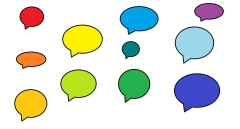
How does language—literary language specifically—shape sexuality and sexual politics? How is queerness as identity, practice, theory, and politics illuminated by literary representation? In this course we will read a variety of essays by literary and cultural queer theorists in dialogue with a variety of literary texts. We will consider how discourses of sexuality at a given time and place shape and inform the representations of queer desire in a multitude of literary genres including poetry, personal and theoretical essays, comics, short stories, and plays. Special attention will be paid to Intersectionality and identity.
Course Goals:
- Learn how to analyze literary texts that focus on (homo)sexuality;
- Recognize heterosexism, explain how it operates, and how 2SLGBTQ+ people have had to learn resistance and disguise in order to thrive/survive within it;
- Learn how 2SLGBTQ+ identities have developed in the twentieth/twenty-first centuries;
- Learn about the politics and social dynamics of “queer” sexualities and genders, including the meaning of gendered and sexual “subjectivities,” closeting and homophobia, and the issues involved in naming within the Queer community itself
ENGL 329: TOPICS IN CHILDREN’S AND YOUNG ADULT LITERATURE
Professor Terri Doughty
Blended Delivery; Available Entirely Online
There’s been a great deal of attention lately to children’s and young adult literature challenging traditional notions of reader-text interaction through experimentation with point of view and playing with nonlinear, nonsequential, and multilayered narratives. There are also many children’s and young adult books which make use of sophisticated techniques such as metatextuality, intertextuality, magic realism, and pastiche. In this course we will read a range of picturebooks and novels that emphasize reading as a form of play, positioning the child reader to take on greater agency as a collaborator in the interpretation of the book.
Texts: Picturebooks: Anthony Browne, Voices in the Park; Mélanie Watt, Chester; David Wiesner, The Three Pigs; David Macaulay, Black and White; Peter Sís, The Wall; Emily Gravett, Spells; Kyo Maclear, Virginia Wolf; Paul Fleischman, Glass Slipper, Gold Sandal; Fanny Britt,Jane, the Fox, and Me; Novels: Brian Selznick, Wonderstruck; Shaun Tan, Tales from Outer Suburbia; David Almond, My Name is Mina and I Love the Night; China Miéville, Un Lun Dun; Cornelia Funke, Inkheart.
Evaluation: Short paper (20%); Discussion Questions Assignment (10%); Research Proposal (10%); Research Paper (25%); Take-home Exam (25%); Participation (10%).
ENGL 330: TOPICS IN SPECULATIVE NARRATIVE: OCCUPYING THE LIMINAL: THE UNCANNY IN GHOSTLY TEXTS
Professor Brenda Sully
“The curtains of the four-poster in the bedroom were closely drawn round all four sides of it, and he put his finger in between them and felt in the bed. He drew the finger back hastily, for it almost seemed to him as if something had – not stirred, perhaps, but yielded – in an odd live way as he pressed it.”
“The Haunted Dolls’ House” M.R. James
English 330 is a study of narrative through speculative fiction, which may include fantasy, science fiction, steampunk, cyberpunk, scientific romance, and alternate worlds. Genres may include short fiction, novels, poetry, graphic narratives, television, and film.
This version of the course will focus on the ghost story. It will follow on Sigmund Freud’s analysis of the uncanny (unheimlich), Tzvetan Todorov’s definition of the fantastic as “that hesitation experienced by a person who knows only the laws of nature, confronting an apparently supernatural event,” and Farah Mendelsohn’s category “intrusive fantasy” which is “the bringer of chaos. It is the beast at the bottom of the garden or the elf seeking assistance.” We will begin in the golden age of the ghost story with Sheridan LeFanu, M.R. James, and others, focusing on conventions such as the Christmas story, the club story, the gothic haunted house, and the antiquarian tale. We will also analyze Henry James’ The Turn of the Screw and David Mitchell’s Slade House. A section of the course will focus on First and Second World War ghost stories by Rudyard Kipling and Elizabeth Bowen. Film narratives like The Innocents, The Others, Pan’s Labyrinth, or Orphan will also be analyzed. The course will also include contemporary writers in the tradition such as Susan Hill, Ruth Rendell and others.
Texts will be chosen from the following list
“The Uncanny” Sigmund Freud
An anthology of ghost stories such as The Oxford Book of Ghost Stories
The Turn of the Screw Henry James
Slade House David Mitchell
Stories by Patricia Highsmith, Ruth Rendell, Susan Hill, and others
Possible films include
The Innocents
The Others
The Woman in Black
Pan’s Labyrinth
Orphan
ENGL 332: TOPICS IN INDIGENOUS LITERATURES: VOICE IN TEXT: STORIES THAT CUT AS SHARP AS A KNIFE
Professor Paul Watkins
“‘There are no truths, Coyote,’ I says. ‘Only stories.’”
–Thomas King, Green Grass, Running Water
We will read and listen to a variety of texts (stories) by First Nations authors in mediums as far ranging as fiction, poetry, comics, literary theory, film, and music. Many of these texts resist standardized reading practices, such as the demarcation been orality and literacy, and open up spaces that challenge the colonization that affects us all, whether we are cognizant of it or not. Given all the explored texts are written by authors living in Canada (although they all cross and straddle borders), questions of what defines Canada and one’s citizenship/ nationhood/ identity within that space will be explored. Remaining attentive to contemporary injustices affecting First Nations communities and a number of Indigenous resistive movements, we will also witness how these texts are engaged with the communities from which they write and to whom they respond.
Aside from the primary material, there will be selected secondary readings that introduce indigenous ways of knowing. I am also hoping to heighten the overall experience by inviting a few writers on the syllabus to visit our classroom. You will also get a chance to share your own experiences (or lack thereof) with Indigenous Literatures and there will be a creative intervention project. We will also tweet our responses as we read/ watch/ listen using the hashtag #ENGL332
Tentative Reading List:
*Robert Bringhurst, A Story as Sharp as a Knife: The Classical Haida Mythtellers and Their World
*Michael Nicoll Yahgulanaas, Red: A Haida Manga (available online)
*Thomas King, Green Grass, Running Water
*Eden Robinson, Monkey Beach
*Chester Brown, Louis Riel: A Comic-Strip Biography
*Leanne Simpson, Islands of Decolonial Love
*Selected music, poetry, and film
ENGL 333: CARIBBEAN CONSTELLATIONS
TOPICS IN POST-COLONIAL LITERATURES
Mondays/Wednesdays 11:30am-1pm
Professor Melissa Stephens
With studies ranging from Frantz Fanon to Rihanna, the course will engage you!
We live in the midst of ongoing struggles for Black freedom. These struggles are connected to histories of slavery, colonialism, and imperialism. How do these histories impact race, culture, sex, gender, land, and language formation? To explore these questions, we will study storytelling practices from anti-colonial, post-colonial, feminist, and queer perspectives in literatures, arts, and theories of the Caribbean and Caribbean Diaspora.
Course readings may include novels, essays, and poetry; reportage and manifesto; reggae, calypso, and hip hop; film, visual art, and blogging. From Frantz Fanon’s psychoanalysis (1952) to Junot Diaz’s comical fiction (2007), we find vexed relations of race, masculinity, and nationalism. From the literature of Michelle Cliff and Edwidge Danticat to the blogs of CODE RED and Creative Commess, we see feminist critiques of homophobic and gendered violence. We will encounter concepts of regionalism, indigeneity, diaspora, and transnationalism, in a range of works by authors and artists, while pop icons like Bob Marley and Rihanna prompt us to ask how music signifies “the Caribbean” for global audiences.
Where and what is the Caribbean? When it is referenced, what feelings are conjured and for whom? Constellations can be difficult to map. As this course concludes, we will consider some of the wide-ranging commitments of post-colonial studies, as an academic discipline, and their relevance to art, activism, and social justice.
Please feel free to email me at Melissa.Stephens@viu.ca for inquiries.
ENGL 334: TOPICS IN CANADIAN LITERATURE
Professor Deb Torkko
This course focuses on representations of a particular condition within the contemporary discourse on Canadian multiculturalism, which might more accurately be described as “transcultural” rather than multicultural. Through our study of Canadian literature written from the 1980s to the present, we will consider the tensions and oppositions all too often masked by the Canadian concept of a harmoniously co-existent multicultural mosaic. Our discussions of the literature will consider a number of important contemporary questions. What does it mean to belong? To not belong? What happens when one has a foot in each of two different worlds: in different communities, affiliations, social classes, cultures, languages, times, and landscapes? What does it mean to inhabit, as a matter of course, the interstices, the liminal spaces, as a lived condition of the transcultural experience? Literary transculturalism is both a strategy of reading and an aesthetic of writing; thus we will examine the authors’ experimentation with narrative style and literary aesthetic for the ways in which their texts represent the dynamics of reciprocity, change, and evolution involved in the interaction of cultures. Hailing from countries such as Sri Lanka, Italy, United States, Japan, China, Ukraine, Vietnam, and Alderville First Nation, our readings may include Michael Ondaatje, Running in the Family; Frank Paci, Black Madonna; Thomas King, Green Grass, Running Water; Hiromi Goto, Chorus of Mushrooms; Fred Wah, Diamond Grill; Janice Kulyk Keefer, Honey and Ashes; Kim Thúy, Ru; Leanne Betasamosake Simpson, Islands of Decolonial Love.
ENGL 344: TOPICS IN SHAKESPEARE
Professor Richard Lane
This world is a comedy to those that think, a tragedy to those that feel. (Horace Walpole)
A study of the works of Shakespeare. The course may focus on various representations of particular Shakespearean plays or on a variety of Shakespeare’s works. Topics may include performance, the London Stage, film adaptations, transformations of identity and power, public freedom, and others. ENGL 344 was formerly called ENGL 367; credit will not be granted for both courses.
ENGL 350: TOPICS IN 19TH-CENTURY LITERATURE: THOMAS HARDY
Professor Sandra Hagan
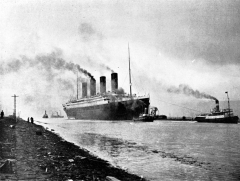 Last summer, you might have found yourself in a darkened theatre watching the latest cinematic adaptation of a Thomas Hardy novel, Far from the Madding Crowd. Its bold heroine, fate-wrung plot, and enduring rural setting are characteristic of this classic nineteenth-century writer’s novels. Known at the end of his career for “a modest and brooding serenity,”* Thomas Hardy has come down to us as a witness of a remote rural past. But as a writer who published for six decades and aimed for popularity, Thomas Hardy also offers us passage into the changing currents of the Victorian Age. He lived through the first wave of feminism, the advance of Darwinism, and the new tide of technology–railroad, telegraph, photography, film, to name a few–that reshaped his world. He navigated these changes in his novels and poetry, joining the popular craze for “Sensation Novels,” mapping the world of the “New Woman,” exploring the drives and pleasures of the animal self, and even writing a poem on the sinking of The Titanic. Eventually, Hardy entered the world of film production as his own novels were adapted for the screen. To recognize his continuing popularity, we will end the course by studying Posy Simmonds’ graphic novel Tamara Drewe, loosely based on Far from the Madding Crowd. Come back to the fields of nineteenth-century Dorset and discover a world that may be strangely familiar already.
Last summer, you might have found yourself in a darkened theatre watching the latest cinematic adaptation of a Thomas Hardy novel, Far from the Madding Crowd. Its bold heroine, fate-wrung plot, and enduring rural setting are characteristic of this classic nineteenth-century writer’s novels. Known at the end of his career for “a modest and brooding serenity,”* Thomas Hardy has come down to us as a witness of a remote rural past. But as a writer who published for six decades and aimed for popularity, Thomas Hardy also offers us passage into the changing currents of the Victorian Age. He lived through the first wave of feminism, the advance of Darwinism, and the new tide of technology–railroad, telegraph, photography, film, to name a few–that reshaped his world. He navigated these changes in his novels and poetry, joining the popular craze for “Sensation Novels,” mapping the world of the “New Woman,” exploring the drives and pleasures of the animal self, and even writing a poem on the sinking of The Titanic. Eventually, Hardy entered the world of film production as his own novels were adapted for the screen. To recognize his continuing popularity, we will end the course by studying Posy Simmonds’ graphic novel Tamara Drewe, loosely based on Far from the Madding Crowd. Come back to the fields of nineteenth-century Dorset and discover a world that may be strangely familiar already.*Irving Howe qtd. in George Woodcock. Introduction. The Return of the Native. Harmondsworth: Penguin English Library, 1978. 13.
Desperate Remedies
Far from the Madding Crowd
The Return of the Native
The Mayor of Casterbridge
Tess of the D’Urbervilles
Jude the Obscure
Thomas Hardy, Selected Poetry
Posy Simmonds, Tamara Drewe
ENGL 396: FILM STUDIES
Professor Clay Armstrong
A study of narrative developed for film. Discussion may involve analysis of genre, plot, characters, themes, symbolism, cinematography, mise-en-scène, editing, sound, acting, and ideologies. The course may be structured as a broad survey or with a focus on a single director or theme.
Generic course descriptions for all English courses are in the VIU Program and Course Calendar.

